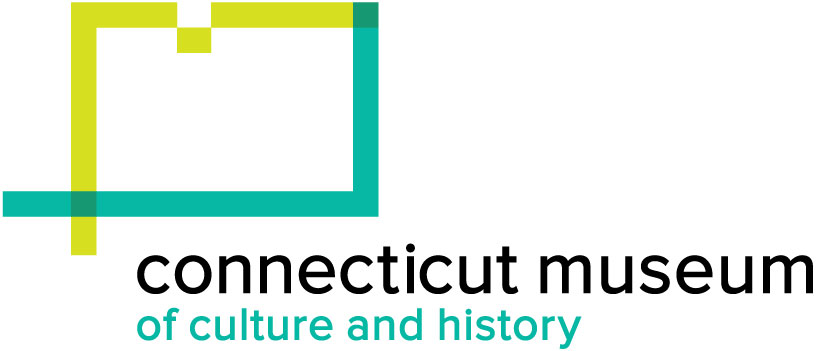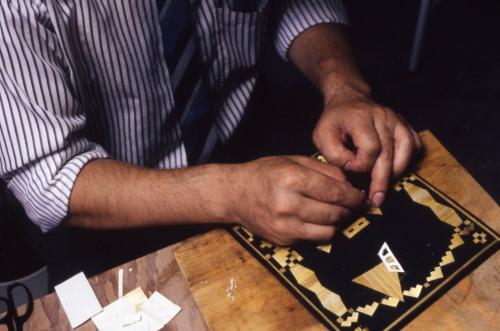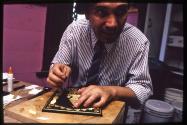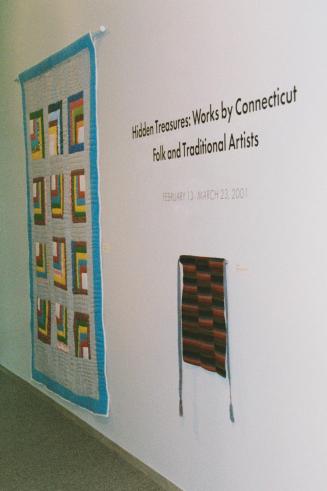Living Legends Project: Nucu Stan
SubjectPortrait of
Nucu Stan
(Romanian, born 1955)
PhotographerPhotographed by
Gale Zucker
Date1994
MediumPhotography; color slides on plastic in cardboard mount
ClassificationsGraphics
Credit LineConnecticut Cultural Heritage Arts Program collections
CopyrightIn Copyright
Object number2015.196.144.1-.114
DescriptionSlides of Nucu Stan taken as part of the Living Legends exhibit project. Photography by Gale Zucker unless otherwise noted.
2015.196.144.1: Slide of Nucu Stan creating a straw picture, focus on his hands
2015.196.144.2: Slide of Nucu Stan demonstrating technique to Vladimir Voroneanu in Vladimir's studio
2015.196.144.3: Slide of Nucu Stan creating straw picture assisted by Vladimir
2015.196.144.4: Slide of Nucu and Vladimir seated
2015.196.144.5: Slide of Nucu holding straw, standing over bin of water and straw
2015.196.144.6: Slide of Nucu ironing the straw
2015.196.144.7: Slide of Nucu ironing the straw
2015.196.144.8: Slide of Nucu cutting the flat straw
2015.196.144.9: Slide of Nucu positioning the flattened straw pieces
2015.196.144.10: Slide of Nucu pressing straw with metal tool
2015.196.144.11: Slide of Nucu pressing straw with metal tool
2015.196.144.12: Slide of Nucu positioning the straw pieces
2015.196.144.13: Slide of Nucu placing strip of straw
2015.196.144.14: Slide of Nucu splitting straw piece
2015.196.144.15: Slide of Nucu flattening straw with iron
2015.196.144.16: Slide of Nucu pressing straw with fingers
2015.196.144.17: Slide of Nucu gluing straw strips on paper
2015.196.144.18: Slide of artist positioning straw pieces, looking up from his work
2015.196.144.19: Slide of Nucu working on straw picture
2015.196.144.20: Slide of Nucu and Vladimir discussing the process
2015.196.144.21: Slide of Nucu cutting out a shape
2015.196.144.23: Slide of Nucu pressing straw with metal tool
2015.196.144.24: Slide of Nucu holding piece of straw, preparing to place it
2015.196.144.25: Slide of Nucu working,distant view of room
2015.196.144.26: Slide of Nucu working on straw art
2015.196.144.27: Slide of Nucu working on straw art
2015.196.144.28: Slide of Nucu standing, looking up from work, frame in foreground
2015.196.144.29: Slide of Nucu standing, working, and smiling while looking down, frame in foreground
2015.196.144.30: Slide of Nucu working
2015.196.144.31: Slide of Nucu pressing straw onto artwork
2015.196.144.32: Slide of Nucu working, holding object in hands
2015.196.144.33: Slide of Nucu about to apply glue using brush
2015.196.144.34: Slide of Nucu applying glue
2015.196.144.35: Slide of Nucu working
2015.196.144.36: Slide of Nucu pressing on artwork with finger
2015.196.144.37: Slide of Nucu positioning straw piece and pressing with metal tool on artwork
2015.196.144.38: Slide of Nucu working on artwork, distant view
2015.196.144.39: Slide of Nucu working on artwork
2015.196.144.40: Slide of Vladimir Voroneanu sitting on table, Nucu Stan sitting in chair
2015.196.144.41: Slide of Vladimir observing Nucu working
2015.196.144.42: Slide of Vladimir sitting on desk, observing Nucu at work
2015.196.144.44: Slide of Valdimir and Nucu both working on piece
2015.196.144.45: Slide of Vladimir and Nucu looking up while talking
2015.196.144.46: Slide of Vladimir and Nucu laughing
2015.196.144.47: Slide of Vladimir and Nucu smiling
2015.196.144.48: Slide of Vladimir and Nucu, seated
2015.196.144.50: Slide of Vladimir and Nucu looking at papers
2015.196.144.51: Slide of Vladimir and Nucu seated
2015.196.144.52: Slide of Vladimir putting straw in water and Nucu working on picture
2015.196.144.53: Slide of Vladimir and Nucu discussing the work
2015.196.144.54: Slide of Vladimir and Nucu working on the artwork
2015.196.144.55: Slide of materials and tools on table
2015.196.144.56: Slide of artist using pen on paper
2015.196.144.57: Slide of Nucu looking up
2015.196.144.58: Slide of Nucu cutting a glued shape
2015.196.144.59: Slide of Nucu pressing on artwork with fingers
2015.196.144.60: Slide of Nucu using scissors, face visible
2015.196.144.61: Slide of Nucu using scissors, face not visible
2015.196.144.62: Slide of Nucu using metal tool
2015.196.144.63: Slide of Nucu looking up
2015.196.144.64: Slide of Nucu placing piece of straw, activity clear
2015.196.144.65: Slide of Nucu placing piece of straw, face visible
2015.196.144.66: Slide of Nucu using scissors
2015.196.144.67: Slide of Nucu holding cardboard that will be the backbord to the picture
2015.196.144.68: Slide of Nucu pressing black cloth with hand
2015.196.144.69: Slide of Nucu holding up black cloth
2015.196.144.70: Slide of Nucu holding piece of straw
2015.196.144.71: Slide of Nucu holding a blade and piece of straw
2015.196.144.72: Slide of Nucu holding blade and piece of straw
2015.196.144.73: Slide of Nucu applying glue from bottle
2015.196.144.74: Slide of Nucu pressing iron to flatten straw on the wooden board
2015.196.144.75: Slide of Nucu lifting up black cloth over wooden board
2015.196.144.76: Slide of Nucu pressing iron to flatten straw on the wooden board
2015.196.144.77: Slide of Nucu pressing straw with iron
2015.196.144.78: Slide of glue and straw on wooden board
2015.196.144.79: Slide of Nucu showing straw with glue applied
2015.196.144.80: Slide of Nucu pressing scissors against artwork
2015.196.144.81: Slide of Nucu using scissors, cutting a glued shape
2015.196.144.82: Slide of artist holding piece of paper
2015.196.144.83: Slide of Nucu with artist’s hand
2015.196.144.84: Slide of Nucu holding scissors in one hand, paper in the other
2015.196.144.85: Slide of Nucu holding scissors pointing up
2015.196.144.86: Slide of Nucu holding scissors in one hand, paper in the other
2015.196.144.87: Slide of Nucu leaning over to place straw piece on picture
2015.196.144.88: Slide of Nucu seated and working on project, view of room
2015.196.144.89: Slide of Nucu looking up from work
2015.196.144.90: Slide of Nucu holding piece of straw over artwork
2015.196.144.91: Slide of sketch and artist’s tools and materials
2015.196.144.92: Slide of Nucu at work
2015.196.144.93: Slide of Nucu smiling, materials in both hands
2015.196.144.94: Slide of Nucu using tool to position straw pieces onto picture
2015.196.144.95: Slide of artist smiling and holding piece of paper in one hand
2015.196.144.96: Slide ofNucu applying tool to artwork
2015.196.144.97: Slide of Nucu sitting at desk of tools, materials, and artwork
2015.196.144.98: Slide of Nucu working on picture
2015.196.144.99: Slide of Nucu pressing on straw
2015.196.144.100: Slide of Nucu working on picture
2015.196.144.101: Slide of Nucu, seated and holding tool in hand
2015.196.144.102: Slide of Nucu applying piece of straw to picture
2015.196.144.103: Slide of Nucu applying glue to cardboard
2015.196.144.104: Slide of Nucu pointing at piece of straw, holding envelope of straw pieces
2015.196.144.105: Slide of Nucu gesturing as he explains the process
2015.196.144.106: Slide of Nucu holding thin piece of straw
2015.196.144.107: Slide of Nucu holding tool
2015.196.144.108: Slide of Nucu preparing the backing of the picture
2015.196.144.109: Slide of Nucu holding black cloth for the backing
2015.196.144.110: Slide of completed, framed artwork - Romanian village scene: The church on the left is a stone church in northern Romania, on the right is a stone church in southern Romania
2015.196.144.111: Slide of completed, framed artwork depicting a wooden church in Marramures
2015.196.144.112: Slide of completed, framed artwork - triptych of a Romanian church flanked by two dragons
2015.196.144.113: Slide of completed, framed artwork - triptych for an altar, depitcting Biblical figures and stories
2015.196.144.114: Slide showing complete, framed artwork depicting the crucifixion
NotesBiographical Note: Ioan “Nucu” Stan (1955- ) grew up in a village in the Carpathian mountains of Transylvania, Romania, receiving a strict Orthodox upbringing despite the anti-religious fervor of the Communist regime. He began making tapestries out of straw as a teenager in Romania while training as a shoemaker. Straw work is a widespread traditional art form in Eastern Europe, incorporating geometric patterns with Orthodox iconography. His pictures reflect the importance of the church as the cultural and spiritual center for the community for thousands of years. After planning the overall design, Nucu cuts shapes from paper, glues the straw to these shapes, then cuts both layers precisely. Usually the shapes are small and geometric, especially the borders which are reminiscent of designs found in clothing, carpets or in wooden village gates. The shapes are then glued carefully to a cotton-covered piece of cardboard, according to the design he has composed. Although the materials he uses are common, Nucu is specific about their types and also their meanings. Oat or rye straw is softer and more golden than wheat; black Romanian cotton is preferable because it has just the right amount of shine and strength. The use of straw with its lustrous golden quality on a solid black background is intended to convey the solemnity of religious mystery. Nucu settled in Connecticut in 1990 after receiving permanent political asylum in the United States. His work has been exhibited and collected by galleries and churches in the Netherlands, the Washington DC area, and in Connecticut where the Mayor’s office, Romanian churches, and the Connecticut Historical Society hold several of his straw pictures in their collections.2015.196.144.1: Slide of Nucu Stan creating a straw picture, focus on his hands
2015.196.144.2: Slide of Nucu Stan demonstrating technique to Vladimir Voroneanu in Vladimir's studio
2015.196.144.3: Slide of Nucu Stan creating straw picture assisted by Vladimir
2015.196.144.4: Slide of Nucu and Vladimir seated
2015.196.144.5: Slide of Nucu holding straw, standing over bin of water and straw
2015.196.144.6: Slide of Nucu ironing the straw
2015.196.144.7: Slide of Nucu ironing the straw
2015.196.144.8: Slide of Nucu cutting the flat straw
2015.196.144.9: Slide of Nucu positioning the flattened straw pieces
2015.196.144.10: Slide of Nucu pressing straw with metal tool
2015.196.144.11: Slide of Nucu pressing straw with metal tool
2015.196.144.12: Slide of Nucu positioning the straw pieces
2015.196.144.13: Slide of Nucu placing strip of straw
2015.196.144.14: Slide of Nucu splitting straw piece
2015.196.144.15: Slide of Nucu flattening straw with iron
2015.196.144.16: Slide of Nucu pressing straw with fingers
2015.196.144.17: Slide of Nucu gluing straw strips on paper
2015.196.144.18: Slide of artist positioning straw pieces, looking up from his work
2015.196.144.19: Slide of Nucu working on straw picture
2015.196.144.20: Slide of Nucu and Vladimir discussing the process
2015.196.144.21: Slide of Nucu cutting out a shape
2015.196.144.23: Slide of Nucu pressing straw with metal tool
2015.196.144.24: Slide of Nucu holding piece of straw, preparing to place it
2015.196.144.25: Slide of Nucu working,distant view of room
2015.196.144.26: Slide of Nucu working on straw art
2015.196.144.27: Slide of Nucu working on straw art
2015.196.144.28: Slide of Nucu standing, looking up from work, frame in foreground
2015.196.144.29: Slide of Nucu standing, working, and smiling while looking down, frame in foreground
2015.196.144.30: Slide of Nucu working
2015.196.144.31: Slide of Nucu pressing straw onto artwork
2015.196.144.32: Slide of Nucu working, holding object in hands
2015.196.144.33: Slide of Nucu about to apply glue using brush
2015.196.144.34: Slide of Nucu applying glue
2015.196.144.35: Slide of Nucu working
2015.196.144.36: Slide of Nucu pressing on artwork with finger
2015.196.144.37: Slide of Nucu positioning straw piece and pressing with metal tool on artwork
2015.196.144.38: Slide of Nucu working on artwork, distant view
2015.196.144.39: Slide of Nucu working on artwork
2015.196.144.40: Slide of Vladimir Voroneanu sitting on table, Nucu Stan sitting in chair
2015.196.144.41: Slide of Vladimir observing Nucu working
2015.196.144.42: Slide of Vladimir sitting on desk, observing Nucu at work
2015.196.144.44: Slide of Valdimir and Nucu both working on piece
2015.196.144.45: Slide of Vladimir and Nucu looking up while talking
2015.196.144.46: Slide of Vladimir and Nucu laughing
2015.196.144.47: Slide of Vladimir and Nucu smiling
2015.196.144.48: Slide of Vladimir and Nucu, seated
2015.196.144.50: Slide of Vladimir and Nucu looking at papers
2015.196.144.51: Slide of Vladimir and Nucu seated
2015.196.144.52: Slide of Vladimir putting straw in water and Nucu working on picture
2015.196.144.53: Slide of Vladimir and Nucu discussing the work
2015.196.144.54: Slide of Vladimir and Nucu working on the artwork
2015.196.144.55: Slide of materials and tools on table
2015.196.144.56: Slide of artist using pen on paper
2015.196.144.57: Slide of Nucu looking up
2015.196.144.58: Slide of Nucu cutting a glued shape
2015.196.144.59: Slide of Nucu pressing on artwork with fingers
2015.196.144.60: Slide of Nucu using scissors, face visible
2015.196.144.61: Slide of Nucu using scissors, face not visible
2015.196.144.62: Slide of Nucu using metal tool
2015.196.144.63: Slide of Nucu looking up
2015.196.144.64: Slide of Nucu placing piece of straw, activity clear
2015.196.144.65: Slide of Nucu placing piece of straw, face visible
2015.196.144.66: Slide of Nucu using scissors
2015.196.144.67: Slide of Nucu holding cardboard that will be the backbord to the picture
2015.196.144.68: Slide of Nucu pressing black cloth with hand
2015.196.144.69: Slide of Nucu holding up black cloth
2015.196.144.70: Slide of Nucu holding piece of straw
2015.196.144.71: Slide of Nucu holding a blade and piece of straw
2015.196.144.72: Slide of Nucu holding blade and piece of straw
2015.196.144.73: Slide of Nucu applying glue from bottle
2015.196.144.74: Slide of Nucu pressing iron to flatten straw on the wooden board
2015.196.144.75: Slide of Nucu lifting up black cloth over wooden board
2015.196.144.76: Slide of Nucu pressing iron to flatten straw on the wooden board
2015.196.144.77: Slide of Nucu pressing straw with iron
2015.196.144.78: Slide of glue and straw on wooden board
2015.196.144.79: Slide of Nucu showing straw with glue applied
2015.196.144.80: Slide of Nucu pressing scissors against artwork
2015.196.144.81: Slide of Nucu using scissors, cutting a glued shape
2015.196.144.82: Slide of artist holding piece of paper
2015.196.144.83: Slide of Nucu with artist’s hand
2015.196.144.84: Slide of Nucu holding scissors in one hand, paper in the other
2015.196.144.85: Slide of Nucu holding scissors pointing up
2015.196.144.86: Slide of Nucu holding scissors in one hand, paper in the other
2015.196.144.87: Slide of Nucu leaning over to place straw piece on picture
2015.196.144.88: Slide of Nucu seated and working on project, view of room
2015.196.144.89: Slide of Nucu looking up from work
2015.196.144.90: Slide of Nucu holding piece of straw over artwork
2015.196.144.91: Slide of sketch and artist’s tools and materials
2015.196.144.92: Slide of Nucu at work
2015.196.144.93: Slide of Nucu smiling, materials in both hands
2015.196.144.94: Slide of Nucu using tool to position straw pieces onto picture
2015.196.144.95: Slide of artist smiling and holding piece of paper in one hand
2015.196.144.96: Slide ofNucu applying tool to artwork
2015.196.144.97: Slide of Nucu sitting at desk of tools, materials, and artwork
2015.196.144.98: Slide of Nucu working on picture
2015.196.144.99: Slide of Nucu pressing on straw
2015.196.144.100: Slide of Nucu working on picture
2015.196.144.101: Slide of Nucu, seated and holding tool in hand
2015.196.144.102: Slide of Nucu applying piece of straw to picture
2015.196.144.103: Slide of Nucu applying glue to cardboard
2015.196.144.104: Slide of Nucu pointing at piece of straw, holding envelope of straw pieces
2015.196.144.105: Slide of Nucu gesturing as he explains the process
2015.196.144.106: Slide of Nucu holding thin piece of straw
2015.196.144.107: Slide of Nucu holding tool
2015.196.144.108: Slide of Nucu preparing the backing of the picture
2015.196.144.109: Slide of Nucu holding black cloth for the backing
2015.196.144.110: Slide of completed, framed artwork - Romanian village scene: The church on the left is a stone church in northern Romania, on the right is a stone church in southern Romania
2015.196.144.111: Slide of completed, framed artwork depicting a wooden church in Marramures
2015.196.144.112: Slide of completed, framed artwork - triptych of a Romanian church flanked by two dragons
2015.196.144.113: Slide of completed, framed artwork - triptych for an altar, depitcting Biblical figures and stories
2015.196.144.114: Slide showing complete, framed artwork depicting the crucifixion
Tiny pieces of flattened straw glued onto a black cotton background - this Eastern European folk art technique has taken on a strong religious and ethnic significance for Nucu Stan, a Romanian political emigré living in Hartford. A parallel can be drawn between historical circumstances in his native Transylvania, overrun by successive groups conquering and changing the cultural patterns of indigenous people there, and Nucu's own struggle to maintain a sense of identity in his new country.
The political situation in Romania in 1987 was very oppressive under the Ceaucescu government. Nucu tried to leave but was turned back at the Yugoslav border, then thrown in jail for nine months. "You become a political prisoner with a dossier...the police check you everywhere...I was lucky, many died." After going to jail twice more, he escaped by swimming two and a half hours across the Danube River to Serbia. After some months in Italy, he moved to the Netherlands where his straw pictures became very popular. He emigrated to America in 1990, settling in Hartford where there is a small community of Romanians.
Although a tradition of straw pictures exists in Romania, Nucu has refined the painstaking process according to his own design. He was introduced to straw work in school when his sister persuaded him to do a picture for her art class. He had a good design sense even then, and with only basic instruction in the technique, Nucu produced excellent work and was encouraged by teachers. Still, he could only find work in construction in Romania, and did not concentrate on his pictures until he found enthusiasm - and a market - for them in the Netherlands.
The quintessentially Romanian quality of Nucu's work lies in its subjects - biblical stories, churches, and village scenes. "My inspiration is coming from old, old tradition which still remains today and is very popular wherever you go." deeply religious man, Nucu relates Transylvanian history as if it were yesterday. His pictures reflect the importance of the church as the cultural and spiritual center for the community for thousands of years, never eclipsed by invaders or changes in dogma. "The church was sometimes just little pictures or small building. When barbarians came, people took the Bible, they took pictures, they took the Christian flag, what for them was holy. Not important how the church looks on the outside." Nucu describes the main religion in Transylvania as Greek Catholic; the Austro-Hungarian rulers changed from Eastern Orthodoxy in the 17th century. "But they still keep it the Byzantine way to make the church, the altar, the ritual, everything - they just recognize the Pope." Nucu's design sense also retains a strong Orthodox influence. "You see it in Byzantine pictures - the line is very important for ritual...they got a very specific line. I try to respect this line."
Making the straw pictures requires time, concentration, and care. The straw needs to be soaked in water to soften it, then it is flattened with an iron. After planning the overall design, Nucu cuts shapes from paper, glues the straw to these shapes, then cuts both layers precisely. Usually the shapes are small and geometric, especially the borders which are reminiscent of designs found in clothing, carpets or in wooden village gates. The shapes are then glued carefully to a cotton-covered piece of cardboard, according to the design he has composed.A lthough the materials he uses are common, Nucu is specific about their types and also their meanings. Oat or rye straw is softer and more golden than wheat; black Romanian cotton is preferable because it has just the right amount of shine and strength. "The straw has a gold way but it isn't real gold...I choose this cotton because it makes a reflection, a solemnity between the straw and cotton. It's contrast between dark and light."
"The technique I have now it is my own...little by little I found my feeling, how I like it...more perfection."
"I try to do it like something monumental, something like holy, something like impressive...how many meditations do you have to give expression about your feeling? That is the same with the straw, and with the pictures, with everything, because we try to find distant universe. We try to escape for our life."
"I want to put some Romanian folk art in...I want some Orthodox way too...to keep it also old-fashioned. Old-fashioned is part of our life, our education...but we can adapt to make it in a new way like the straw - because no one did straw pictures in the church before. But I have a feeling, now I can design all the churches just about straw pictures. And I am sure is going to look like gold...it's going to be like gold for a long long time, and it's going to be art for a long long time."
Subject Note: Living Legends: Connecticut Master Traditional Artists was a multi-year project to showcase the excellence and diversity of folk artists living and practicing traditional arts throughout the state. The first CCHAP Director, Rebecca Joseph, developed the first exhibition in 1991, displaying photographic portraits along with art works and performances representing 15 artists from different communities, at the Institute for Community Gallery at 999 Asylum Avenue in Hartford. In 1993, the next CCHAP Director, Lynne Williamson, organized two exhibitions of the photographic portraits from the original Living Legends exhibit, at the State Legislative Offices and at Capital Community-Technical College in Hartford. The photographs were also displayed in the Capitol Rotunda in Washington, DC in October 1994, with the help of Rep. Nancy Johnson. Also in 1993, a grant from NEA Folk Arts was awarded to CCHAP to expand and tour the original exhibit and create a video to accompany it. The Connecticut Humanities Council and the Connecticut Commission on the Arts supported an exhibit catalogue and a performance series. CCHAP began fieldwork around the state in 1994 to document several of the artists involved in the first exhibit, adding new artists. The expanded version of Living Legends opened at ICR's Gallery at its new office space at 2 Hartford Square West, then traveled to several sites in 1994 and 1995, including the Norwich Arts Council, the Torrington Historical Society, and the New England Folklife Center, Boott Mills Museum at Lowell National Historical Park in Lowell Massachusetts. CCHAP along with folklorist David Shuldiner created a video based on images taken of the artists at work and interviews conducted with them. Portraits and images of the artists working were taken by photographer Gale Zucker. A catalogue of the images, art works, and texts based on the artist interviews was compiled by CCHAP and designed by Dan Mayer who also served as the exhibition designer.
Thirteen visual artists were included in the new Living Legends project: Eldrid Arntzen, Norwegian rosemaling; Qianshen Bai, Chinese seal carving; Katrina Benneck, German scherenschnitt; Alice Brend, Pequot ash basket making; Romulo Chanduvi, Peruvian wood carving; Laura Hudson, African-American quilt making; Ilias Kementzides, Pontian Greek lyra making and playing; Sotha Keth and Sophanna Keth Yos, Cambodian dance costume making; Keith Mueller, decoy carving; Bernabela Quinones, Puerto Rican mundillo lace; Walter Scadden, decorative ironwork; Nucu Stan, Romanian straw pictures. Five performing artists were presented: Sonal Vora, Indian Odissi dance; Somaly Hay, Cambodian court dance; Ilias Kementzides, Pontian Greek lyra; Abraham Adzenyah, Ghanaian music and drumming; and La Primera Orquesta de Cuatros, Puerto Rican cuatro group.
The profound way these artists describe their inspirations, their intricate technical processes, and the dynamic tension they feel between traditional form and personal innovation within that form mark them as true creative masters. The artists featured in Living Legends had very different characters, stories, homelands, communities, art forms and techniques, but they were linked by their high level of artistic skill and a devotion to the traditions of their culture. The Living Legends project highlighted the way that cultural histories, technical information, aesthetic tastes, social values and other deep aspects of heritage can be communicated through the process and creation of traditional arts. Also, these artists express a strong desire to teach what they know to others, to "pass on the tradition." Community survival, memories of the past, and hopes for the next generation depend on exemplary culture bearers such as these.
Additional audio, video, and/or photographic materials exist in the archive relating to this artist
Cataloging Note: This project was made possible in part by the Institute of Museum and Library Services MA-245929-OMS-20.
Status
Not on view



























































































































